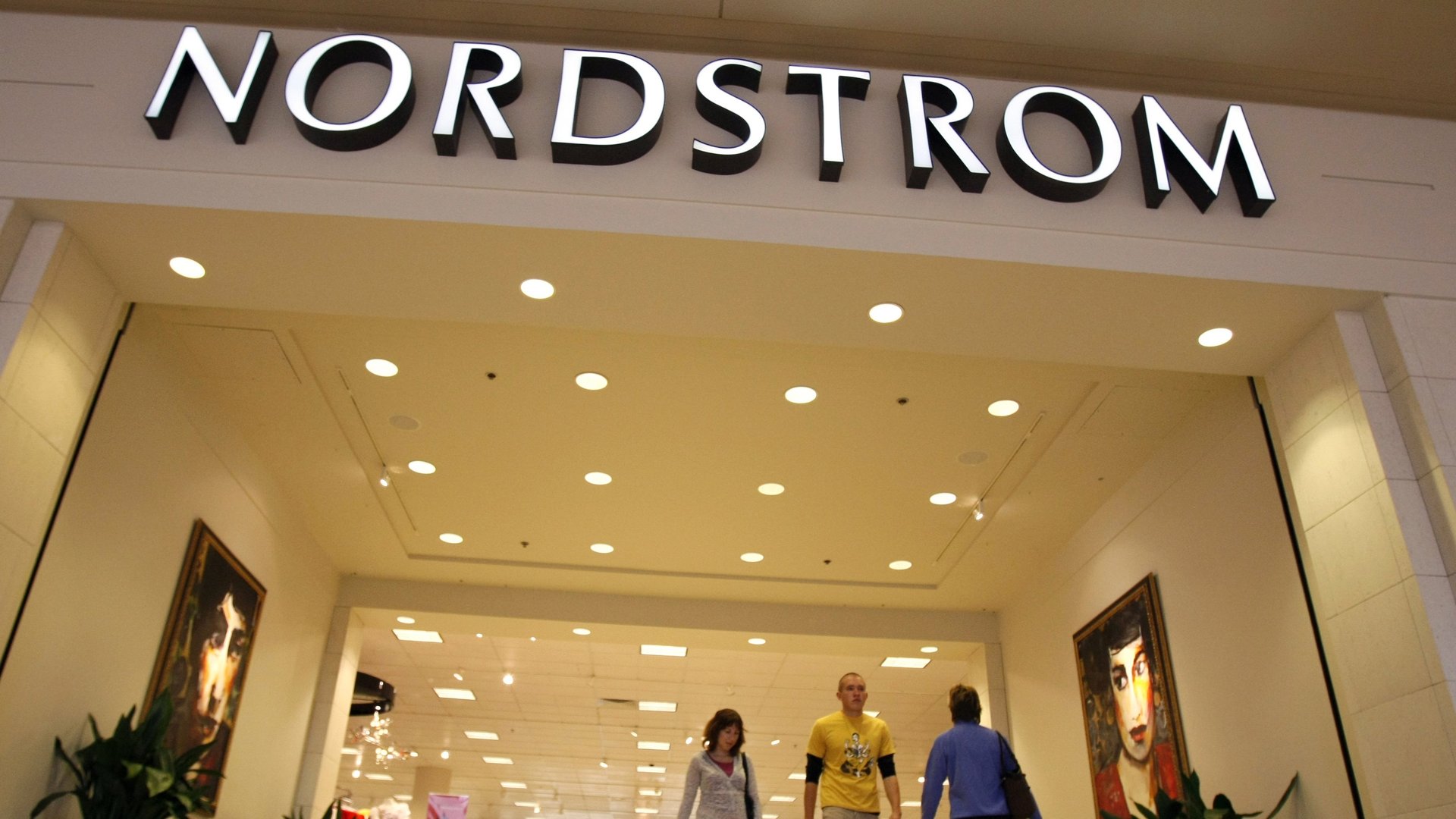Department stores should go ahead and shut down hundreds of locations, report says
Customers have fled department stores in droves, causing sales to plummet. But physical stores haven’t shut down fast enough to keep pace.


Customers have fled department stores in droves, causing sales to plummet. But physical stores haven’t shut down fast enough to keep pace.
Store productivity, measured as sales-per-square-foot, has dwindled as a result, according to new research by Green Street Advisors, a real estate research firm. To achieve the same productivity US department stores enjoyed 10 years ago, they would need to collectively close about 800 stores. As the Wall Street Journal reports (paywall), that’s roughly 20% of all the anchor space currently occupied in US malls.
Some companies, the firm says, would have to shutter more stores than others. Sears and J.C. Penney needed to pare back most. They would need to close 43% and 31% of their existing stores, respectively. Nordstrom’s number is 30 stores, or 25% of its existing locations. Macy’s would have to close the lowest share of its existing stores: just 9%, though that’s still 70 stores.
Closures needed to return stores to their 2006 sales/sq. ft.
The report analyzed the sales and retail space occupied by major department store chains and found that their 2015 sales were down 24% from their 2006 level, adjusted for inflation. At the same time, their square footage fell just 7%, even as e-commerce siphons off sales and brands increasingly sell through their own retail channels.
Too many stores is a problem also hitting the sporting goods industry, which has seen a rash of Chapter 11 filings recently.
Department stores have been in decline in the US for years. They were once social as well as commercial hubs in urban centers, but their role shifted as Americans moved to the suburbs. They became large anchors for malls, while specialty stores focused on one category, such as clothing, proliferated around them. Now malls, which even their creator came to hate, are withering. (High-end malls are the exception).
Not to be forgotten, of course, is Amazon. It has cut into department store profits like no other e-commerce player. A recent report by financial firm Cowen and Company predicted Amazon would soon surpass Macy’s as the largest clothing retailer in the US.
Many department stores have been chopping retail space. In January, Macy’s announced plans to close 36 stores, while just last week Sears said it would shut down 10 locations.
Green Street’s numbers suggest that isn’t nearly enough, though some department stores might argue. While J.C. Penney has closed around 100 stores over the last three years, it’s resisting sweeping closures this year as it sees signs of improvement. The company has also said it doesn’t necessarily see sales increase online if it closes stores.
Nordstrom, which does well online and tends to have stores at the best malls, told the Wall Street Journal that its stores are profitable and closing them is not its “normal practice.” Though it just announced it would cut up to 400 jobs, they’re mostly corporate positions and not on sales floors.
Green Street’s report notes that if stores did go ahead with the closures, it would devastate weaker malls that rely on them.